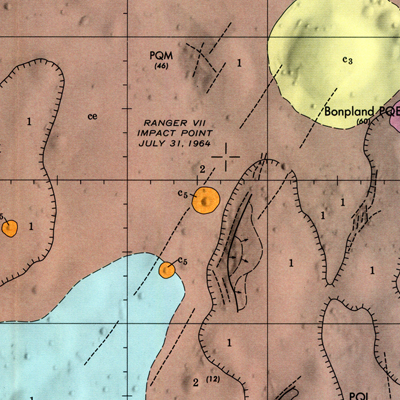Artful Inquiry and the Unexpected Ethical Turn: Exploring Identity through Creative Engagement with Grades 9-12 Students in Guatemala and Canada

Abstract
This paper presents a research project conducted with Grades 9-12 students in Canada and Guatemala where the visual arts were used to explore identity. Participants engaged in a short-term artful inquiry in which they were asked to create a piece of visual art that represented their cultural roots, self in present society and hopes for the future. Various modes of representation including drawing and collage were used. When considering the data, emergent themes and the overall project, unexpected reverberations about the ethical impact of doing arts based work emerged. These questions led to further questions about how creative engagement, individual and collective transformation within the classroom environment does/does not occur as a result of creative engagement.
Keywords
Art Education, Indigenous Education, Curriculum Development, Artful Inquiry
References
- Aboriginal Learning Knowledge Centre (2009, November). Retrieved 20, March, 2016 from http://aerc.usask.ca/publications/ ABLKC%20Brochure.pdf
- Antone, E, Gamlin, P. & Provost-Turchetti, L. (2003). Literacy and learning: Acknowledging Aboriginal holistic approaches to learning in relation to ‘best practices’ literacy training programs. Toronto: Literacy and Learning Final Report.
- Banks, J. (1998). The lives and values of researchers: Implications for educating citizens in a multicultural society. Educational Researcher, 27(7), 4-17.
- Battiste, M. (2011). Cognitive imperialism and decolonizing research: Modes of transformation. In Reilly, C., Russell, V., Chehayl, L.K., & McDermott, M. (Eds.). Surveying borders, boundaries, and contested spaces in curriculum and pedagogy (pp. xv-xxviii). Charlotte, NC: Information Age Publishing.
- Battiste, M. (1995). Introduction. In M. Battiste and J. Barman (Eds.). First Nations education in Canada: The circle unfolds. Vancouver, BC: UBC Press.
- Butler-Kisber, L. (2010). Qualitative inquiry: Thematic, narrative and arts-informed perspectives. London: Sage.
- Canadian Council on Learning. (2009). The state of Aboriginal learning in Canada: A holistic approach to measuring success. Ottawa, ON: ISBN 978-1-926612-30-0. Retrieved from http://www.ccl-cca/sal2009
- Carter, M. (2016). Considering the Cultural Insignia Project with high school visual arts students in Northwestern Ontario, Canada. In International Yearbook for Research in Arts Education: At the crossroads of arts and cultural education: Queries meet assumptions. Saebo, A. (Ed.) Volume 4, pg. 71-79. Waxmann Verlag, Munster, Germany.
- Carter, M. (2014). The teacher monologues: Exploring the experiences and identities of artist-teachers. Rotterdam, The Netherlands: Sense Publications.
- Carter, M. (2013). Becoming a crossroads: An a/r/tographic journey in the borderlands. UNESCO Observatory Multi-Disciplinary Journal in the Arts, 3 (1), 1-18.
- Finley, S., & Knowles, G. J. (1995). Researcher as artist/ artist as researcher. Qualitative Inquiry, 1(1), 110-142.
- Goleman, Daniel (1995) Emotional Intelligence. New York: Bantam Book.
- Greene, M. (1995). Releasing the imagination: essays on education, the arts, and social change. San Francisco: Jossey-Bass Publishers.
- Irwin, R. (2003). Towards an Aesthetic of Unfolding In/sights Through Curriculum Journal of the Canadian Association for Curriculum Studies, 1(2), 63-78. Available online at: http://pi.library.yorku.ca/ojs/index.php/jcacs/issue/view/712/showToc,16 pgs.
- Irwin, R., Rogers, T. & Wan, Y. (1997). Belonging to the Land: Understanding Aboriginal art and culture. Journal of Art and Design Education, 16(3), 315-318. http://onlinelibrary.wiley.com/doi/10.1111/1468-5949.00091/abstract
- Kalin, N. (2014). A/r/tography as indisciplinary turning. Visual Inquiry, 3(2), 131-146.
- Kanu, Y. (2011). Integrating Aboriginal perspectives into the school curriculum:
- Purposes, possibilities, and challenges. Toronto, ON: University of
- Toronto Press.
- Kovach, M. (2009). Indigenous methodologies – Characteristics, conversations, and contexts. Toronto: University of Toronto Press.
- Leavy, P. (2009). Method meets art: Arts-based research practice. New York, NY: Guilford Press.
- Menchu, R. (1983). I, Rigoberta Menchu. New York, NY: Verso.
- Smith-Gilman, S. (2015). Constructing living bridges: Learning to listen to culture in an indigenous pre-school. McGill University. Retrieved February 7, 2015 from http://digitool.Library.McGill.CA:80/R/-?func=dbin-jump-full&object_id=132508&silo_library=GEN01
- Witt, N. W. (2006). Not just adding Aboriginal contents to a non-Aboriginal curriculum: Preparing Saskatchewan teachers for the rising Aboriginal school population. International Journal of Learning 12(10), 347-360.
- Wright, S. (2003). The arts: Young children and learning. Boston, MA: Pearson Education.